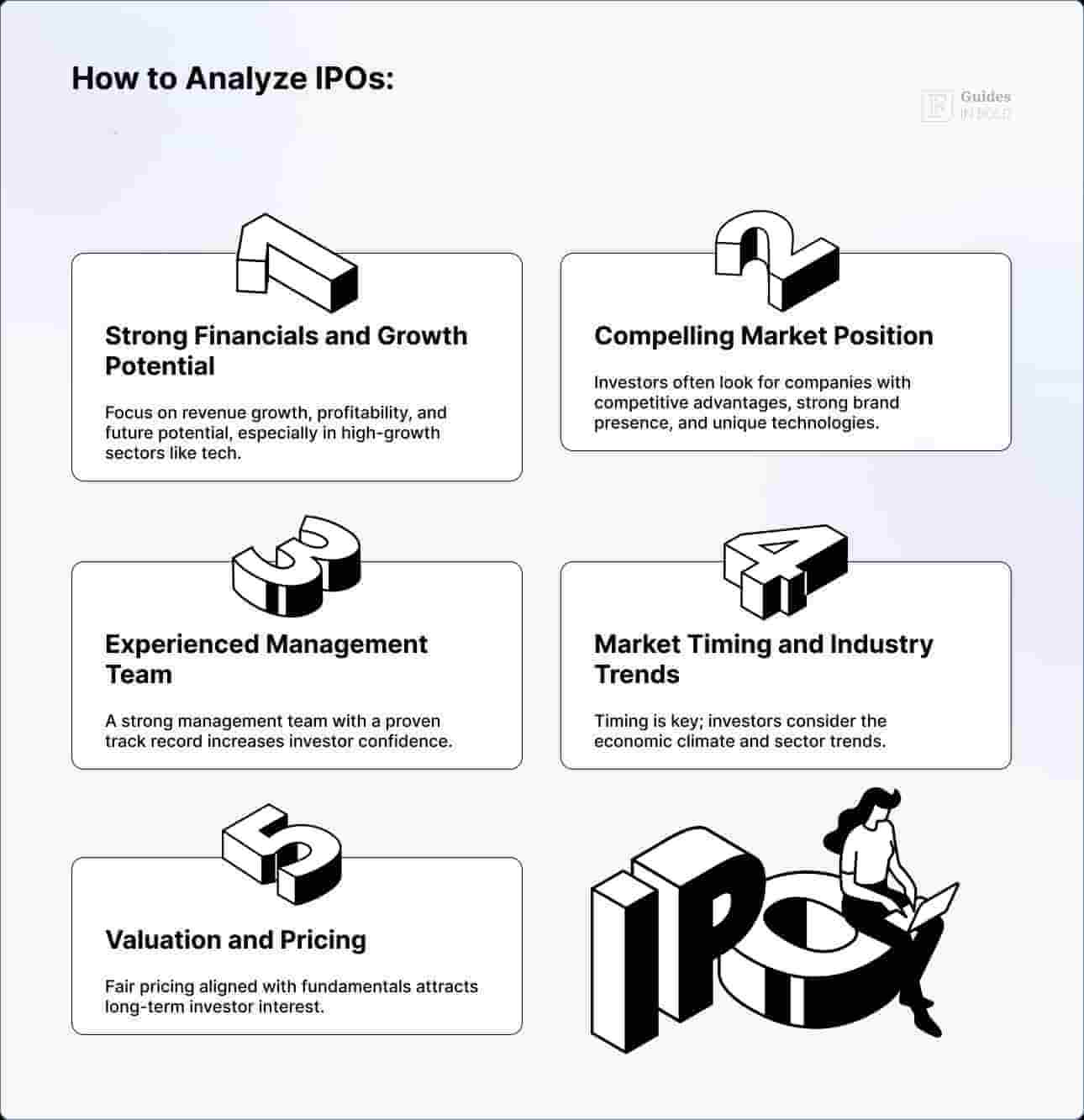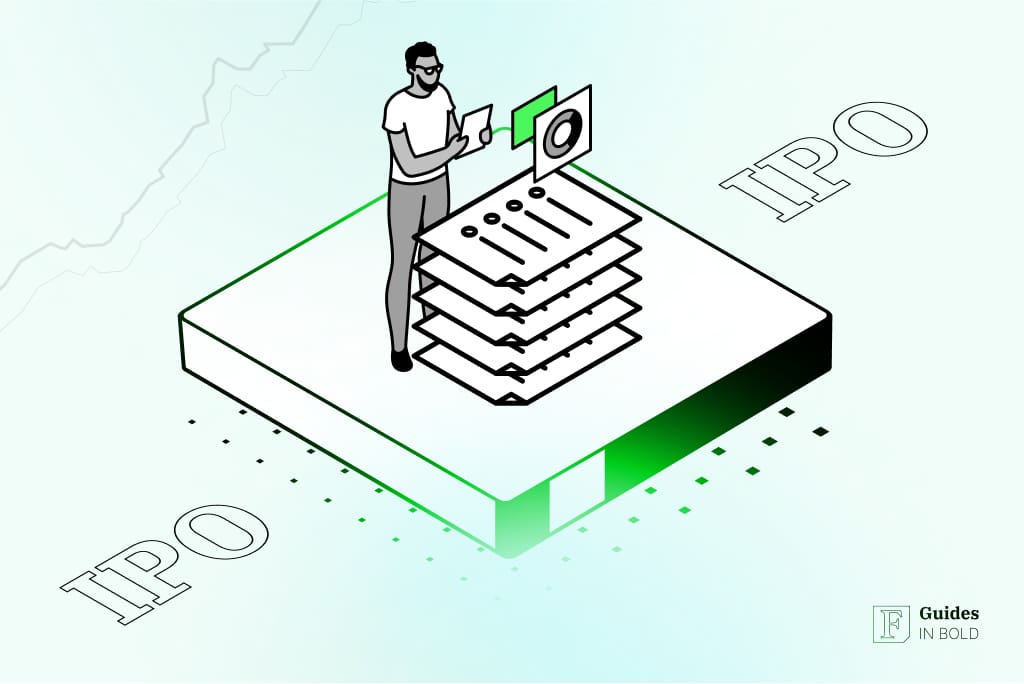This guide will investigate the initial public offering or IPO. It will delve into the process of a company “going public,” how retail investors can get in on the action, as well as the pros and cons of investing in these types of stocks.
Highly Rated Stock Trading & Investing Platform
-
Invest in stocks, ETFs, Options and cryptocurrencies.
-
Copy top-performing crypto-traders in real time, automatically.
-
0% commission on buying stocks - buy in bulk or just a fraction from as little as $10. Other fees apply. For more information, visit etoro.com/trading/fees.
-
eToro USA is registered with FINRA for securities trading.
What is an IPO stock?
The IPO process allows the offering company to raise capital from public investors to expand operations and fuel growth. In addition, an IPO can be seen as an opportunity for early-stage investors and founders to cash in, as it typically includes a share premium for existing private investors.
In order to “go public,” a private company hires an investment bank (or several) to underwrite the IPO. Typically in an underwriting agreement, the underwriter agrees to bear the risk of purchasing the entire inventory of shares issued in the IPO before they are sold to the public at the IPO price. Often, to ensure widespread distribution of the new IPO shares, a group of underwriters, called the syndicate, shares in the risk for the offering.
The role of an underwriter is to serve as the intermediary between the company and investors, as well as work with the company to ensure that all regulatory requirements are satisfied. In particular, the underwriters must navigate the process of filing a registration statement with the Securities and Exchange Commission (SEC), which includes its prospectus with detailed information on the company’s finances, business model, and growth opportunities.
Then, to gauge interest in the stock, IPO specialists contact an extensive network of investment organizations—such as mutual funds, pension funds, foundations, and insurance companies. The amount of interest these large institutional investors receive helps their underwriters set an initial public price and issuance date.
Finally, on IPO day, the company “goes public” as the company’s stock becomes available to the general public, beginning trading on a major stock exchange like the NASDAQ or New York Stock Exchange (NYSE).
Recommended video: What is an IPO?
Investing for beginners:
- What is Investing? Putting Money to Work
- 17 Common Investing Mistakes to Avoid
- 15 Top-Rated Investment Books of All Time
- How to Buy Stocks? Complete Beginner’s Guide
- 10 Best Stock Trading Books for Beginners
- 15 Highest-Rated Crypto Books for Beginners
- 6 Basic Rules of Investing
- Dividend Investing for Beginners
- Top 6 Real Estate Investing Books for Beginners
The IPO process
Getting a company to its IPO is time-consuming, expensive, and teeming with regulatory hurdles. For example, to go public, a company must open its records to public scrutiny, as well as examination by SEC regulators.
The IPO process consists of the pre-marketing phase of the offering and the initial public offering itself, involving the following steps:
- Selecting an underwriter: The first step is for the issuing company to pick an underwriter. The underwriter is typically an investment bank that operates with IPO specialists such as lawyers, certified public accountants (CPAs), and SEC experts. The underwriter’s job is to assess the firm through financial analysis and come up with a valuation, share price, and a date for the IPO, as well as ensure that the company satisfies all regulatory requirements. They also guarantee that a specific amount of shares will be sold at that initial price and purchase any excess;
- Documentation: The underwriter then files the S-1 registration statement with the SEC, outlining the planned use of capital raised by the IPO, detailing the current business model and competitors, and presenting a brief prospectus of the offering itself. It will then be revised as needed throughout the pre-IPO process;
- Marketing: Before an IPO opens to the public, the company seeks to drum up excitement for the IPO through roadshows (a series of presentations given to investors in various locations). A successful roadshow can drive demand for the stock and raise more capital;
- Going public: Once the company’s registration statement is declared “effective,” and the underwriter has priced the shares, trading can begin on a stock exchange like Nasdaq or the New York Stock Exchange;
- Stabilization: In an IPO, underwriters stabilize the stock price by buying its shares at the offer price on the secondary market. By increasing demand, the underwriters can prevent the stock’s price from falling. In addition, in the case of higher demand, underwriters can also increase supply through the greenshoe option, which allows for the selling of up to 15% more shares than the original issue amount;
- Quiet period: With an IPO, the quiet period extends from when a company registers with the SEC to 40 days after the stock starts trading. During these periods, the company’s management and marketing teams are barred from talking to the public about their firm to preserve objectivity and avoid the appearance of insider information. The purpose of this period is to ensure all investors get a “fair shake” by assuring they have access to the same information at the same time;
- Transition to market competition: The end of the quiet period starts the final stage of the IPO process, the transition to market competition, as investors transition from relying on the prospectus for information on the stock to relying on market forces.
Recommended video: The IPO process
How to invest in an IPO?
Gaining access to an IPO before it begins trading can be challenging. However, should you decide to take the chance, follow these four steps:
Step 1: Research
It can be tricky to find the IPOs with the most potential. But the critical first step is learning as much as possible about the company going public and then scrutinizing its long-term prospects.
The primary source of information for an investor interested in an IPO is the S-1 form, which is available after the company registers with the SEC. This form provides background and financial information on the company and a prospectus on the offering.
However, though companies are required to disclose a detailed overview of their investment offering in their prospectus, it is still composed by them and thus not entirely unbiased. Therefore, it is similarly vital to carry out independent research on the business and its competitors, financing, previous press releases, as well as overall industry landscape.

Step 2: Choose your broker
Buying stock in an IPO is more complex than just placing an order for a certain number of shares. To begin with, you must have a brokerage account that offers IPO trading. From there, ensure you meet the eligibility requirements for participating in an IPO, such as a minimum account value or a specific amount of trades transacted within a particular time frame.
For example, TD Ameritrade requires individuals to have either an account value of at least $250,000 or to have carried out at least 30 trades in the last three months.
However, even if your broker offers access and you’re eligible, you might not be guaranteed the initial offering price as retail investors typically aren’t able to buy the moment an IPO stock starts trading.
Step 3: Request shares
After you’ve met the eligibility requirements, you can request shares from the broker. However, a request does not ensure you will be granted access, as brokers generally get a set amount to distribute.
Step 4: Place the order
If you have access, the final step is placing the order. The trade order is a conditional buy offer, which will become active once the IPO is priced. After the price has been set and before the window closes, you can confirm or change your order. However, you won’t be able to purchase more than you requested and won’t have to pay a higher price than you indicated in your order.
IPO Alternatives
Even though individual investors are gaining more access to IPOs, getting in on the action is still relatively challenging. However, there are other ways to capitalize off newly public stock, including:
Direct Listing
A direct listing is when a company makes its stock available on exchanges by bypassing the underwriting process. Companies that don’t want share dilution (no new shares are created) and wish to avoid lock-up periods choose the direct listing process, which is also the less expensive option. Without an intermediary, however, there is no safety net guaranteeing the shares will sell.
A direct offering is usually only viable for a company with a well-known brand. Notable companies that went public via a direct listing include Spotify (NYSE: SPOT), Slack, and Coinbase.
Dutch auction
In a Dutch auction, the IPO price is not fixed. Instead, potential buyers bid for the shares they want as well as the price they are willing to pay. The bidders willing to pay the highest price are then allocated available shares.
Special purpose acquisition company (SPAC)
A special purpose acquisition company is a shell company (a company that exists only on paper with no active business operations) formed to raise capital through an IPO to acquire an existing business. During their IPOs, SPACs have no active business operations or stated targets for acquisition. In fact, the only real asset is the funds raised through the IPO.
Called “blank check companies,” SPACs give IPO investors- both institutional and retail investors- little information before investing. They are typically launched by sponsors or investors with expertise in a particular industry or sector and pursue deals in that arena.
The funds raised in an IPO are allocated to an interest-bearing trust account that will be paid out only to complete an acquisition or to return the funds to investors if the SPAC is liquidated (if the acquisition isn’t completed within two years).
IPO ETFs
IPO ETFs contain a diversified pool of companies that recently moved into the public markets and can present a safer option to investing in a single IPO since IPO ETFs can mitigate risk by creating a portfolio that spans various asset classes. However, IPO ETFs may not be for you if you’re driven by hype and the short-term demand for single IPOs. Instead, IPO ETFs typically create better long-term investment prospects.
Are IPO stocks good investments?
There are more risks with IPOs than investing in blue chip stocks or established public companies. Because IPO stocks are companies that have yet to retain long-standing track records in markets, investors are making decisions with more unknown variables, potentially confusing popular demand with intrinsic value. For this reason, you should research and analyze any company disclosures before moving forward.
In addition, the prices of newly issued stocks often fluctuate wildly on the first trading days, so it’s wise to exercise caution when it comes to the first-day pops and price surges. Truly valuable companies will remain that way over the long term.
Moreover, the investor is likely to overpay for their stake since the company will attempt to raise money selling at a premium price. Therefore, from a value investing perspective, it is worth waiting for a glitch in the business (or the economy) that will cause the price to crumble, allowing investors to stack up on the stock at a discount.
Ultimately, buying IPOs isn’t so much investing as speculating. If you believe the stock is a sustainable investment and plan to hold it long-term, consider waiting a few weeks or months once the buying graze has settled and the price has reached equilibrium.
Pros and cons of IPOs for investors
Like any investment, IPOs also have distinct benefits and risks.
Pros
- Attractive share price: If you’re lucky enough to gain access to a sought-after IPO, you can acquire shares at the offering price, which is usually discounted to ensure sales;
- Potential for a hefty payout: IPOs can generate substantial returns in the long term if they succeed.
Cons
- Hardcore eligibility requirements: Most individual investors will not meet the criteria to purchase shares before the IPO starts trading on the open market;
- High volatility: IPOs can be volatile investments, with overly fluctuating stock prices after they go public. There is also a high possibility you will overpay for your shares;
- Underperformers: Historically, most underperform the market benchmark.
In conclusion
All in all, if you’re a seasoned investor with a high-risk tolerance who has access to IPOs, you have thoroughly researched the company getting ready to go public, and the industry in which it operates, you may consider participating in an IPO.
However, even for those who can get in on the first-day pop, IPOs may not be a sure bet. So, limiting your position size on any individual stock to a few percent of your holdings is wise. Ultimately, no matter which investment type you choose, only invest what you can afford to lose.
Disclaimer: The content on this site should not be considered investment advice. Investing is speculative. When investing, your capital is at risk.
FAQs about IPOs
What is an IPO in stock market?
IPO or initial public offering is the process of a private company making its shares available to the general public by listing them on a stock exchange.
How is an IPO priced?
The price of an IPO hinges on consumer demand for the stock. Strong demand leads to a higher stock price. In addition to demand, several other factors determine an IPO valuation, including industry comparables, growth prospects, and the story of a company.
What is the risk of investing in IPOs?
There is no guarantee that a stock will resume at or above its IPO price once it’s trading on a stock exchange. Often, a company is overvalued or valued incorrectly, and its stock price plunges after the IPO, never reaching the initial offering price. As a result, investors will lose money on that stock. This became painfully apparent during the dot-com era, which saw millions of investor dollars evaporate as Internet IPOs fell like dominos. A more recent example of an IPO flop is Lyft, which debuted in 2019 at $72, and is now down to $13 (as of December 2024).
How to buy an IPO?
To buy an IPO, you need a brokerage account. From there, you must ensure you meet the eligibility requirements of the IPO. You can then request shares from your broker (don’t get your hopes up, there is only a limited number of shares available for retail investors). Finally, you may place the order if you gain access to the stock. Unfortunately, most IPOs are only accessible to institutional investors.
What company holds the largest IPO?
As of the end of 2024, the world’s largest IPO was completed by Saudi Aramco, a Saudi Arabian multinational petroleum and natural gas company, which went public on the Tadawul (the Saudi Stock Exchange) on Dec. 11, 2019. The company raised approximately $29.4 billion.
How to invest in pre-IPO stocks?
There are a few options available for investors looking to invest in pre-IPO stocks: join a platform specializing in pre-IPO investments; become an accredited investor to access private equity markets; or participate in crowdfunding opportunities for startups. Each method has specific eligibility criteria and risks, so it’s important to research thoroughly and understand the investment process, including any restrictions on the resale of shares.
Where to buy pre-IPO stocks?
To buy pre-IPO stocks, retail investors can use specialized online platforms offering early-stage company shares, or participate in equity crowdfunding through websites that enable investments in startups. Some brokerage firms may also offer pre-IPO shares to qualifying clients. It’s important to note that these avenues have varying requirements and risks.
Highly Rated Stock Trading & Investing Platform
-
Invest in stocks, ETFs, Options and cryptocurrencies.
-
Copy top-performing crypto-traders in real time, automatically.
-
0% commission on buying stocks - buy in bulk or just a fraction from as little as $10. Other fees apply. For more information, visit etoro.com/trading/fees.
-
eToro USA is registered with FINRA for securities trading.






